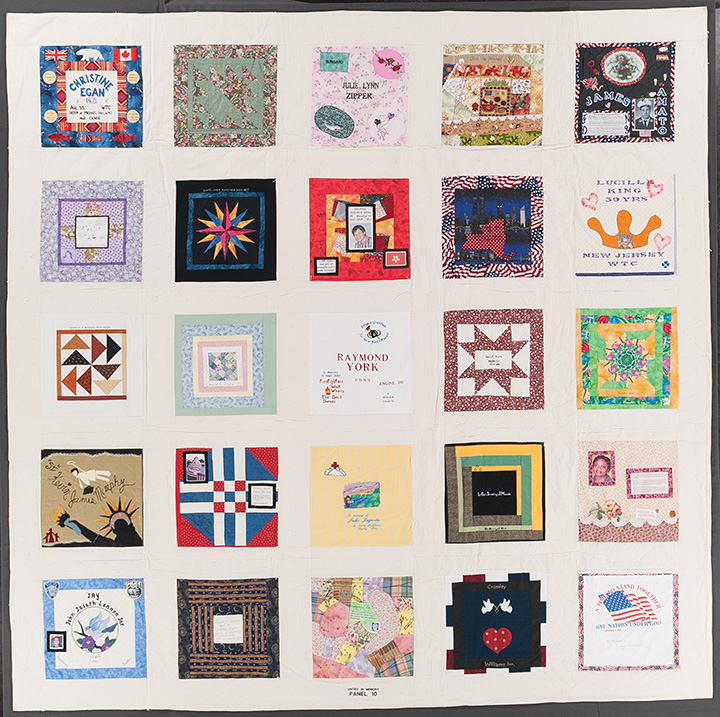Remembrance Project Banners
Social Justice Sewing Academy
Various locations, United States, 2021
Cotton; machine pieced and quilted
Collection of the Social Justice Sewing Academy
The lives of the ten people of color named in these Remembrance Banners ended because of events of domestic, community, racial, or gender violence. The majority of these deaths occurred during encounters with law enforcement. Similar to the AIDS Memorial Quilt, each block includes the victim’s name as well as their portrait, words, or interests and her or his role as a member of families and communities. Also similar to public displays of the AIDS Quilt, local and national activist organizations display the banners at activist events to testify of the victims’ human dignity and their tragic end.
Remembrance Project Banners are a project of the Social Justice Sewing Academy (SJSA). Founded in 2017, SJSA is a youth education program that bridges artistic expression with activism to advocate for social justice. Through hands-on workshops across the country, SJSA empowers youth to use textile art as a vehicle for personal transformation and community cohesion to become agents of social change. Volunteers who assist the SJSA in their education programs made these blocks for the Remembrance Project Banners.
Top then bottom, left to right
Sierra Robinson
Noelani Robinson
Blocks by Toby Schwartz, 2020
Sierra Robinson and Noelani Robinson were murdered in a case of domestic violence.
Tanna Gardner
Block by an anonymous quilter, 2020
Tanna Gardner was a mother of two children and had just finished her Accounting degree when she died on Mother’s Day. While she was celebrating her graduation, another car pulled up beside the one she was in and fired into it, killing her and wounding others.
Elijah McClain
Block by Vivien K. Partridge, 2020
Elijah McClain died at age 23. Police officers stopped him while he was walking down the street, possibly dancing to music. He was unarmed. Officers pinned him in a carotid hold. McClain vomited and said he could not breathe. Paramedics injected him with a sedative and transferred him to an ambulance where he suffered cardiac arrest.
Ray Shawn Hudson, Jr.
Block by Melinda Miller, 2021
Maya Rivera
Block by Deborah Gronich Tate, 2021
Ray Shawn Hudson, Jr. died on his 5th birthday, along with his mother Maya Rivera (24) and father Ray Shawn Hudson, Sr. (28). Their bodies were burned and discarded on private property. The suspect is an acquaintance of Hudson, Sr.
Christian Madrigal
Block by Jennifer Jow, 2020
Christian Madrigal died in police custody at age 20.
Taja Gabrielle DeJesus
Block by Alisa K, 2020
Taja Gabrielle DeJesus was a 36-year-old trans woman of color who was fatally stabbed.
Natasha McKenna
Block by Katie Gillies, 2020
Natasha McKenna was a 37-year-old African American mother living with mental illness. She was in police custody and was restrained while being transferred to another facility. She resisted and was stunned four times with a Taser before going into cardiac arrest.
Philando Castile
Block by Marissa Friesen, 2020
Philando Castile was a 32-year old African American man. His car was pulled over by officer Jeronimo Yanez. Castile legally carried a weapon, disclosed this to the officer, and did not reach for it. The officer shot Castile seven times at close range.

